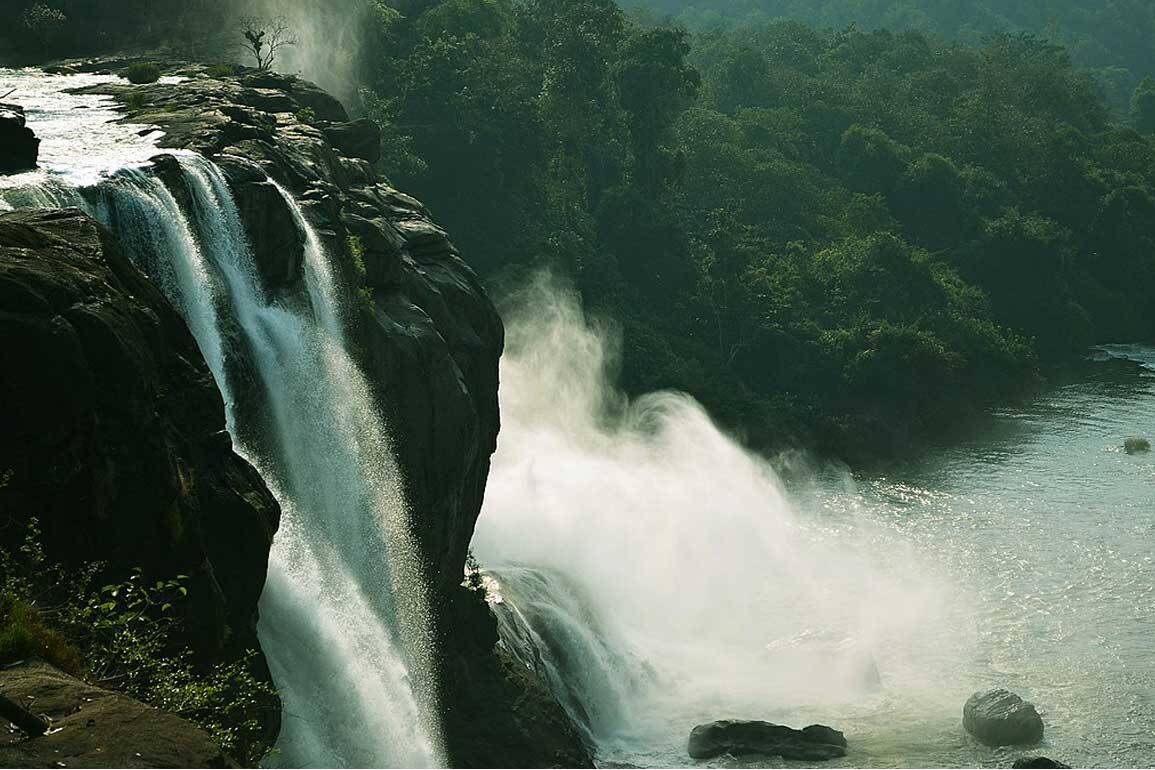The Government of Kerala is planning to revive the Athirapally hydroelectric project. The project involves building a dam on the Chalakudy river. The scenic attraction of Athirapally water-fall could be affected due to the proposed power project. This project was abandoned multiple times earlier due to the imbroglio around environmental clearance. Environmental law concerns such as effective public hearing, forest dweller’s rights are significant and need to be addressed before examining the feasibility of the hydroelectric project. Moreover, the biodiversity loss, sustainable development concerns, and preserving the aesthetics of waterfall as a natural heritage form crucial factors to be addressed before the project should be allowed to be initiated.
Problem with the EIA process and Public Hearing
The Athirapally hydroelectric project has always been in the midst of controversy due to the opposition from the local community and environmental groups. The proposed hydroelectric project Environmental Impact Assessment (EIA) process was alleged for not conducting a proper public hearing. Public hearing requirement under the EIA Rules needs to provide the project affected local community and other concerned persons an opportunity to highlight the concerns. The environmental clearance forms an important requirement under the Environmental Impact Assessment rules issues under the Environmental Protection Act, 1986. The EIA process conducted around 1998 did not factor in the crucial element of public participation. Even during the subsequent attempt of the Kerala State Electricity Board to get clearance for the project the crucial element of the public hearing was not conducted earnestly in the EIA process. Lack of proper consultation and public hearing process with the local community has been a significant reason for repeated admonition from the High Court of Kerala. An alternative people’s public hearing was also conducted in 2005 to highlight the adverse impact of the project, which was not taken into consideration in the EIA report.
Environmental Law Alliance (ELAW) in its 2005 study highlights the lack of quality of EIA report prepared for the Athirapally project. As per the ELAW study report, the impact upon the biodiversity and “populations of Asiatic elephant and other threatened and endangered species” are not highlighted in the EIA report. The possible threat to the biodiversity concerns are once again becoming the focal point with the revival proposal of Athirapally project. From an environmental law perspective, “the principle of public participation and access to information and justice” forms a cardinal part of the international sustainable development law principles.
Forest Rights Concerns
The Forest Right Act, 2006 (The Scheduled Tribes and Other Traditional Forest Dwellers Recognition of Forest Rights Act, 2006) provides indigenous forest-dwelling community self-determination right over the community land and resources. The international law principle of Free Prior Informed Consent (FPIC) needs to be followed before any infrastructural or industrial developmental activity impacting the rights of forest-dwelling community is undertaken. The Forest Right Act, 2006 stipulates the consent of gram sabha as a prerequisite to initiating any infrastructural activity. The Athriapally project also impacts around members of the indigenous Kadar community. They have been displaced earlier due to other hydro-electric projects being conducted on the Chalakudy project.
Based on the Niyamagiri case decision of the Supreme Court, the indigenous community has all the right to reject any activity which they deem to be an intrusion into their rights. Hence as per the forest rights law, it would be significant for the Athirapally project to comply with the FPIC requirement. Earlier in 2015, the Kadar community had invoked the FPIC right to reject the Athriapally project. Hence it would be an uphill task for the project proposer to gain confidence of the indigenous Kadar community. Moreover, even from an equity perspective, the Kadar community had already paid the price of displacement earlier and the question of further forced displacement is a major human rights concern.
Sustainable Development Concerns
The goal of sustainable development is now well-embedded in Indian environmental law. The judicial decisions such as Vellore Citizen Welfare Forum vs. Union of India provides amble support for sustainable development to be observed in the policy process. Should we still support dams which could create ecological impacts is an important concern raised by the World Commission on Dams. The evidence from the Gadgil committee report as well as consecutive floods which had affected Kerala during the last two years, need to be considered for decision making. The precautionary principle, which calls for an evidence-based decision-making process in matters affecting human and environmental ecosystems, needs to be applied in the context of the Athirapally project.
Way Forward: Athirapally as a Natural Heritage
The World Heritage Convention,1972 requires states to take specific measures for the protection of natural heritage. Athirapally waterfall needs special attention as a natural heritage that attracts an immense number of tourists. Indian environmental law needs to encapsulate the aesthetic protection of natural heritage as an important factor in policy decision making. Summing up, the decision making should be based on the precautionary principle and sustainable development norms. An additional factor that needs consideration here is the aesthetic value of Athirapally waterfall from a cultural and natural heritage perspective. The transparent public participation, forest rights, and sustainable development law concerns needs to be proactively assessed as part of the Athirapally project.







